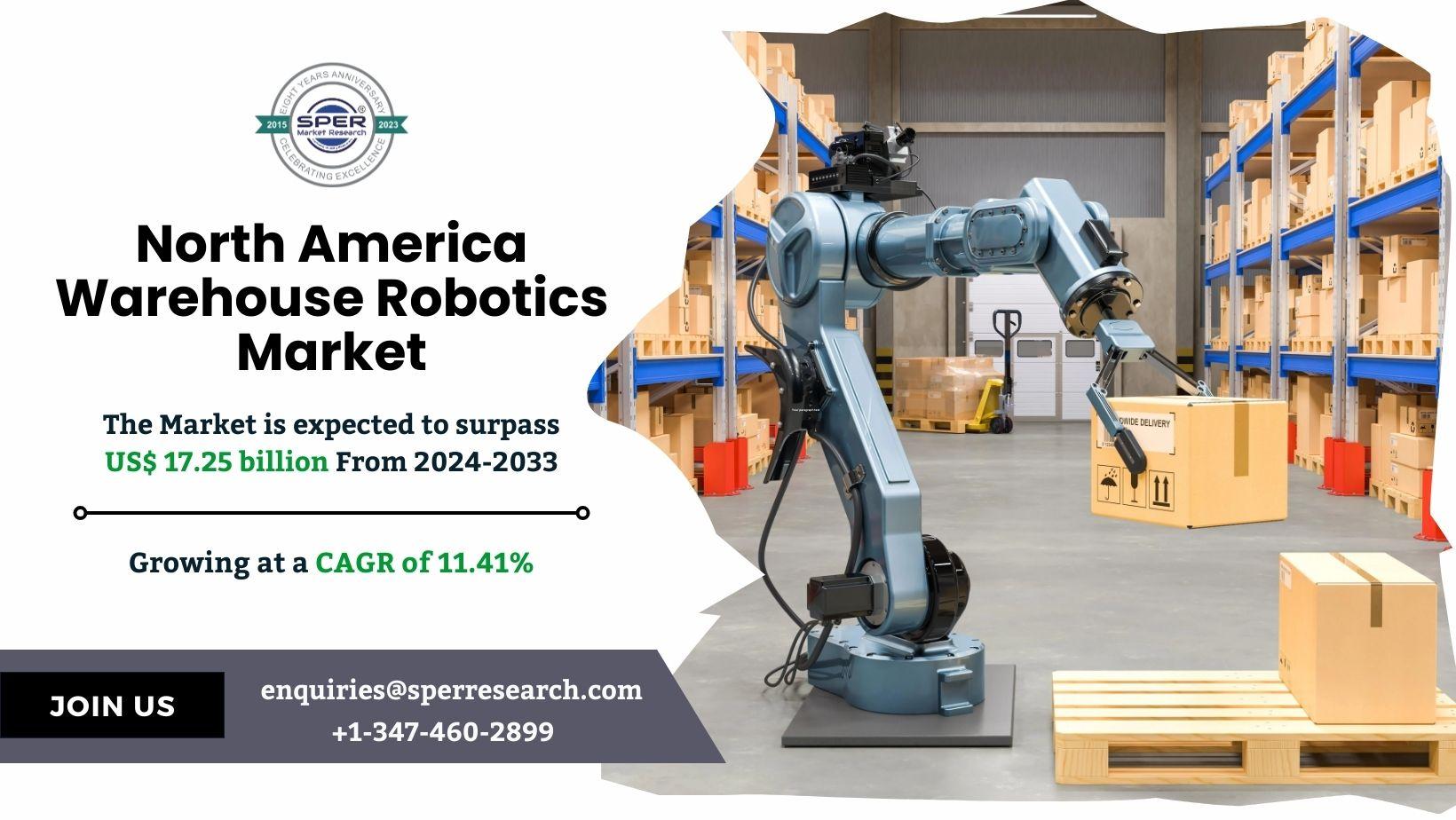Warehouse robotics involves the use of automated robots to handle tasks like picking, packing, sorting, and moving goods within warehouses. These robotic systems enhance operational efficiency by speeding up processes and reducing human error. With the rapid growth of e-commerce and increasing demand for quick order fulfillment, warehouses are adopting robotics to optimize inventory management and improve supply chain performance. Common technologies include autonomous mobile robots, automated guided vehicles, and robotic arms. By automating repetitive tasks, warehouse robotics help reduce labor costs, increase accuracy, and enable continuous 24/7 operations, ultimately boosting productivity and safety in warehouse environments.
According to SPER Market Research, ‘North America Warehouse Robotics Market Size- By Type, By Function, By End User- Regional Outlook, Competitive Strategies and Segment Forecast to 2033’ the North America Warehouse Robotics Market is estimated to reach USD 17.25 billion by 2033 with a CAGR of 11.41%.
Drivers:
The North America warehouse robotics market is propelled by the rising demand for automation to improve efficiency and reduce labor costs within the logistics, retail, and e-commerce sectors. The rapid growth of online shopping and omnichannel distribution requires warehouses to fulfill orders faster and with greater accuracy, encouraging investment in robotics. Technological advancements such as autonomous mobile robots (AMRs), AI-driven systems, and collaborative robots enhance productivity and safety in warehouses. Additionally, persistent labor shortages and high employee turnover in warehousing jobs push companies to adopt automated solutions. Government incentives and increasing adoption of Industry 4.0 practices further support the deployment of smart warehouse robotics to optimize inventory management and streamline supply chain operations.
North America Warehouse Robotics Market Sample in PDF Format, Click Here
Restraints:
The North America warehouse robotics market faces challenges due to the high initial capital investment and ongoing maintenance costs, which can be prohibitive for small and medium-sized businesses. Integrating robotics with existing warehouse management systems and infrastructure often involves complex, time-consuming processes that can disrupt operations. There is a notable shortage of skilled personnel capable of programming, operating, and maintaining advanced robotic equipment, creating a talent gap. Cybersecurity concerns arise as connected robotic systems become vulnerable to hacking and data breaches. Moreover, resistance from the existing workforce, fearing job losses, and navigating regulatory compliance and safety standards can delay or limit the broad adoption of warehouse robotics in the region.
The United States dominates the North America warehouse robotics market due to its advanced logistics infrastructure, rapid growth in e-commerce, and significant investments in automation technology. Some key players are- 6 River Systems (Shopify), Fetch Robotics, GreyOrange, Honeywell International Inc., InVia Robotics Inc., Knapp AG, Kiva Systems (Amazon Robotics LLC), Locus Robotics, Omron Adept Technologies, Vecna Robotics, Others.
For More Information, refer to below link: –
North America Warehouse Robotics Market Growth
Related Reports:
Switzerland Electric Vehicle Market Size
Kenya Two-Wheeler Tire Market Size
Follow Us –
LinkedIn | Instagram | Facebook | Twitter
Contact Us:
Sara Lopes, Business Consultant — USA
SPER Market Research
enquiries@sperresearch.com
+1–347–460–2899



